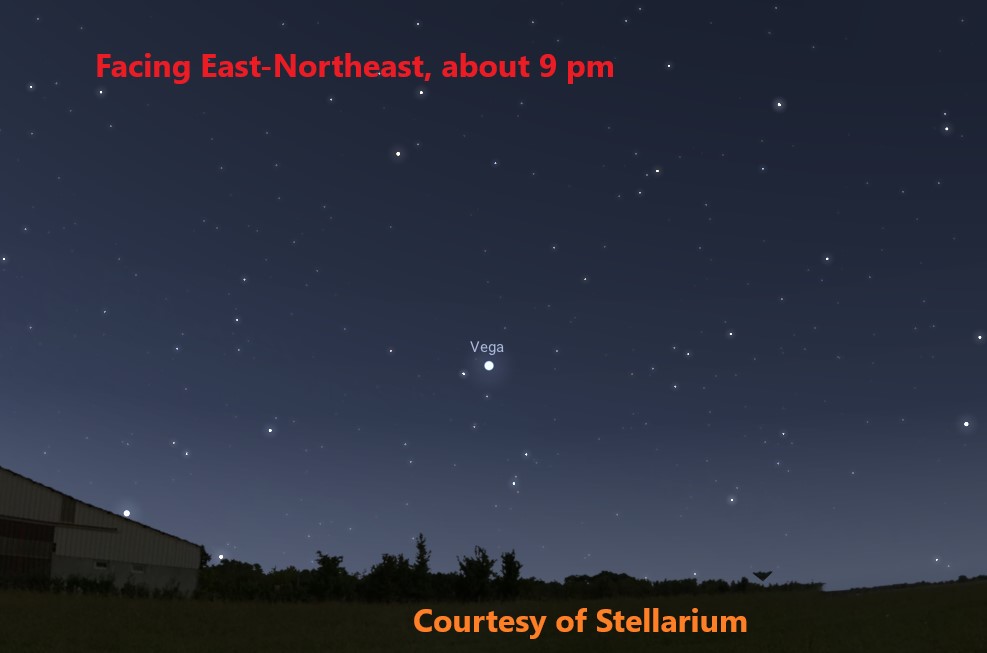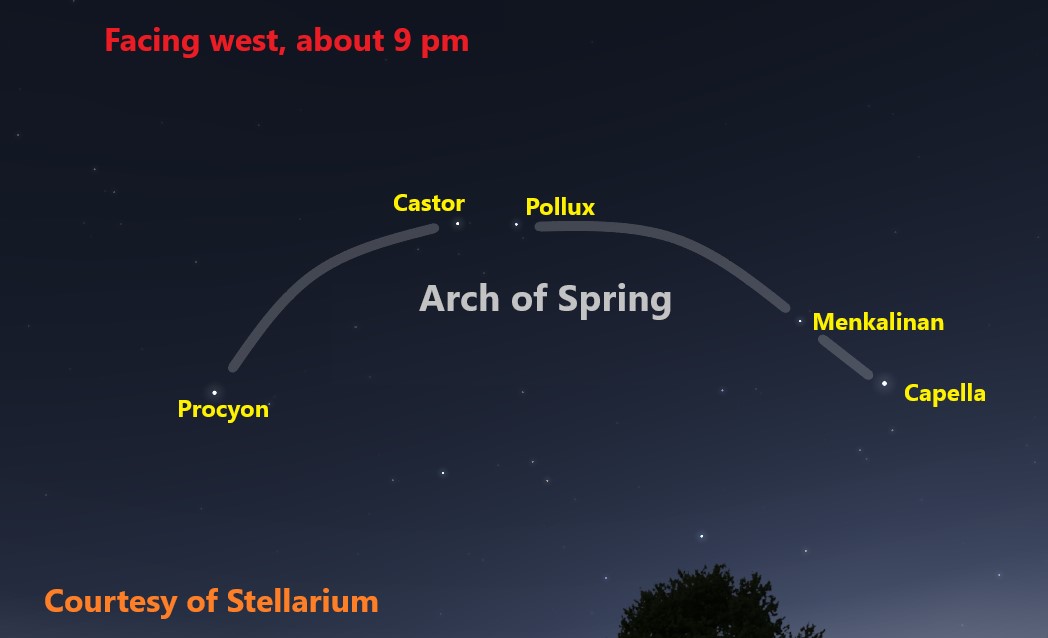COMING AND GOING
Hopefully, all of you had a chance to get a look at the April 8th eclipse. Our family traveled to the eastern part of Illinois and had a great view of totality, even though there were a few high, thin clouds- hopefully you did at least as well. I have now been lucky enough to see totality five times in six attempts going back to 1991, with a total of about 15 minutes, 43 seconds worth of corona seen.
Eclipse Day was rather warm in the sun, with a temperature in the upper 70s, and I got a bit of sunburn. It definitely felt like summer, until it didn’t during totality, when it was much cooler. This reminds me of the changing seasons that are also reflected in the sky. One hint of the upcoming summer is the appearance of the very bright star Vega, very low in the northeastern sky around 9 pm this month. If you can find a location with an open view in its direction, Vega should be unmistakable, and probably twinkling fiercely as you view it through the thicker atmosphere near the horizon. It will stand out even better and probably twinkle a lot less if you view it an hour to two later, before you go to bed. Earth’s rotation will cause Vega to appear higher and higher in the eastern sky as the night wears on. Vega is about twice as massive and much hotter than our Sun- if you look closely, you should be able to notice that it white decidedly tinged with blue, at least to my eyes. It is relatively nearby as stars go, at about 25 light years from us. What were you doing in 1999, when the light from Vega left it to head towards your eyes?

Vega glimmers brightly in the northeastern skies of May.
If you were to stay up very late, around 2 or 3 am this month, you would find Vega shining almost directly overhead. It will appear in this spot about two hours earlier each month, due to Earth’s revolution around the Sun, meaning that Vega is perhaps best known as the classic “Star of Summer.”

The Arch of Spring is visible low in the western sky during May.
For some reason, we are very partial to arches at Gateway Arch National Park, whether they are natural, artificial, or if they occur on Earth or in the sky. Some left over stars of winter are located farther north and east in the sky than others and thus remain visible into May, forming the “Arch of Spring” which is best seen at a convenient hour at this time of year. To find our sister Arch in the sky, face west and find a spot without too many trees or obstacles. Most noticeable will be the two stars Castor and Pollux, which represent the famous Gemini twins in Greek mythology. They are 51 and 34 light years away from us, respectively and are thus about 17 light years or 100,000,000,000,000 miles apart- not really that close!
If you regard the short apparent distance between Castor and Pollux as the “keystone”, then the south leg of the Arch of Spring would be the curve to Procyon, and the north leg the line to Capella. Procyon is a very close 11 light years away and Capella 43. The star Menkalinan is actually the most luminous member of the Arch of Spring, about double Castor, but appears the dimmest at a distance of 81 light years. Catch these stars early on May evenings, before they set.
Although the stars I have mentioned this month are easy to see even from the city, light pollution is definitely a serious problem, both for stargazing and in many other ways. Learn more on the impact of light pollution and how you can measure it yourself by attending Dark Sky Missouri member Don Ficken’s “Lights Out Heartland” program at Gateway Arch National Park at 7 pm on Saturday, May 11th. The program will be held outdoors on our Entrance Plaza and will be followed by free telescope viewing on the Plaza. A beautiful crescent moon will be seen. In the event of inclement weather, the talk will still take place but will be moved inside the main entrance of the Arch (no access to the Museum or lower levels) while the viewing will be cancelled. Call 314-655-1704 on the afternoon of the event for an update if the weather looks questionable.
